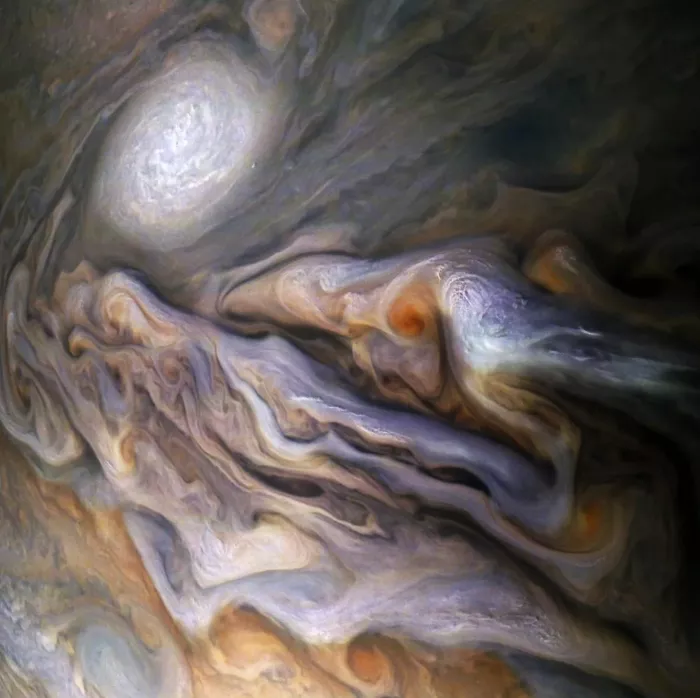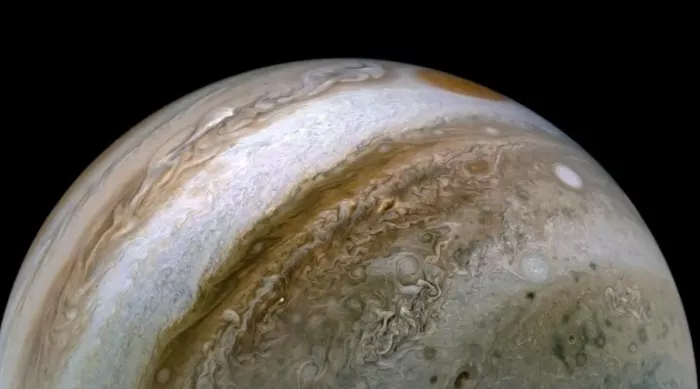An international team of astronomers found that the gaseous envelope of Jupiter is not evenly distributed. There are more metals in the interior than in the exterior. Together, there are 11 to 30 Earth masses, accounting for 3-9% of the total mass of Jupiter. This is a sufficiently high metallicity, and it can be concluded that the kilometer size celestial bodies and planetary bodies must have played a role in the formation of Jupiter. The study was led by Yamila Miguel (sron/ Leiden Observatory) and published in the Journal of astronomy and Astrophysics on June 8, 2022.

Jupiter, a gas giant planet, is the fifth planet away from the sun, running between Mars and Saturn. It is by far the largest and largest planet in our solar system, and its mass is more than 317 times that of the earth. When NASA's Juno space probe reached Jupiter in 2016, we caught a glimpse of the extraordinary beauty of the largest planet in our solar system. In addition to the famous great red spot, Jupiter was originally full of hurricanes, which almost gave it the appearance and mystery of Van Gogh's paintings.
However, the planetary envelope beneath the thin visible layer is not obvious. Nevertheless, Juno can still draw a picture for us by sensing the gravity above different positions on Jupiter. This provides astronomers with information about the internal composition, which is different from what we see on the surface. An international team of astronomers led by Yamila Miguel (sron/ Leiden Observatory) has now found that the gaseous blanket is not as homogeneous and well mixed as previously thought. On the contrary, its "metals", that is, elements heavier than hydrogen and helium, contract more toward the center of the planet. To reach their conclusions, the team developed theoretical models that met the observational limits of Juno's measurements.

The team studied the distribution of metals because it gave them information about how Jupiter formed. It has been proved that these metals are unevenly distributed throughout the cladding, and there are more metals inside than outside. The total adds up to 11 to 30 earth mass metals. There are two mechanisms for gas giants like Jupiter to acquire metal during their formation: accretion through pebbles or larger planetary debris. We know that once an asteroid is large enough, it will begin to push pebbles outward. The interior of Jupiter we see now is rich in metals, so we can rule out the fact that only pebbles were discharged as solid during the formation of Jupiter.